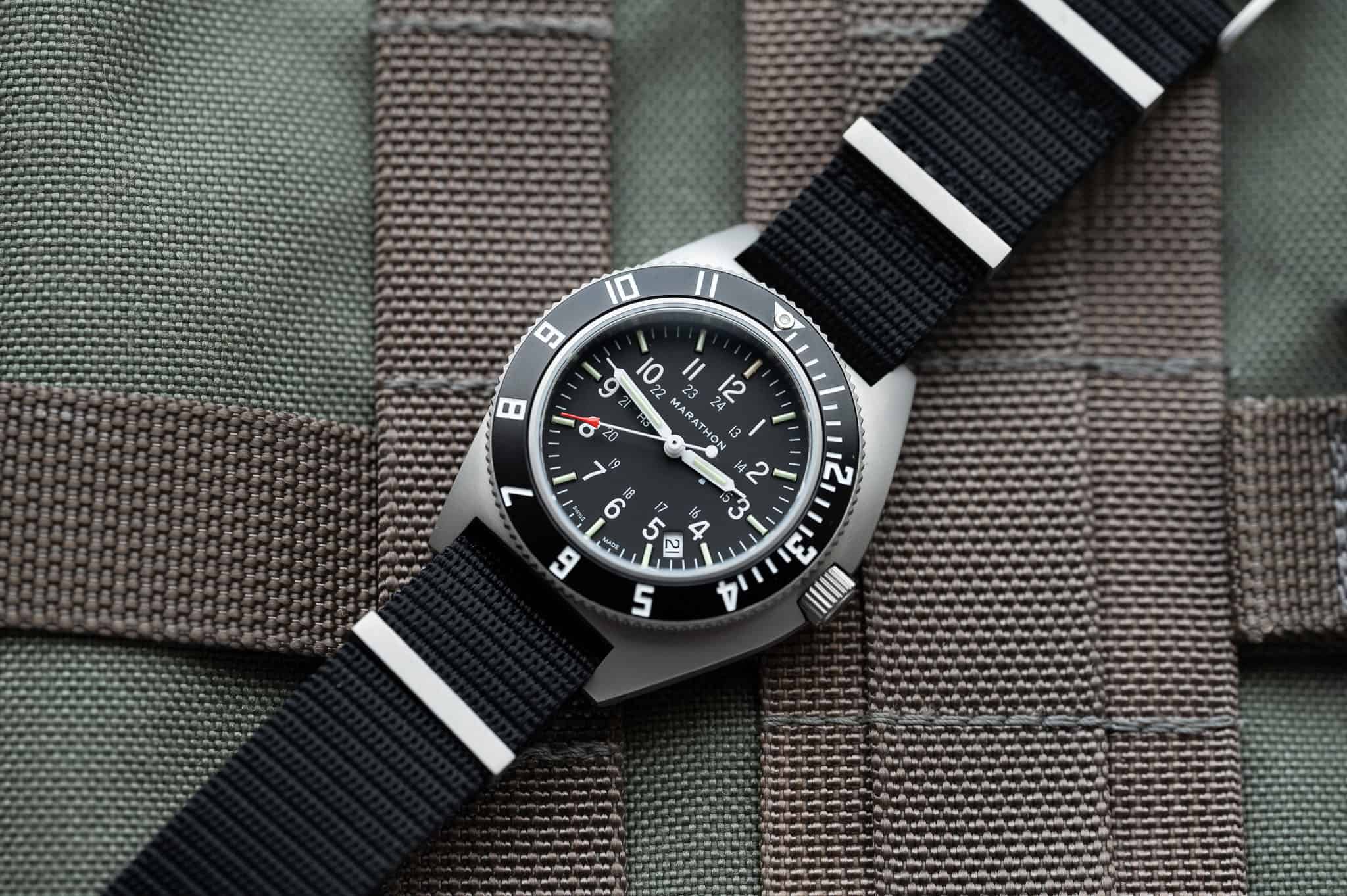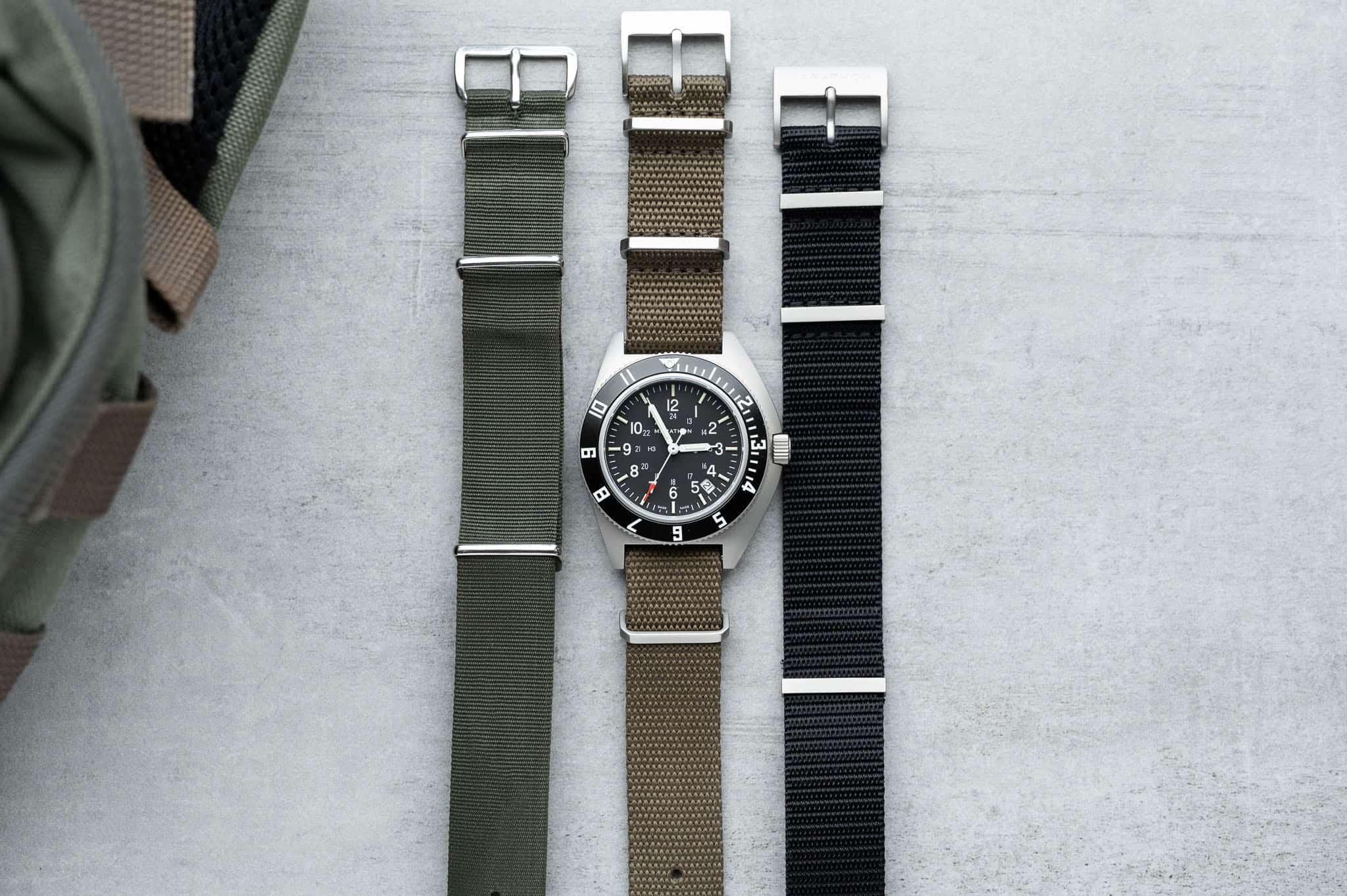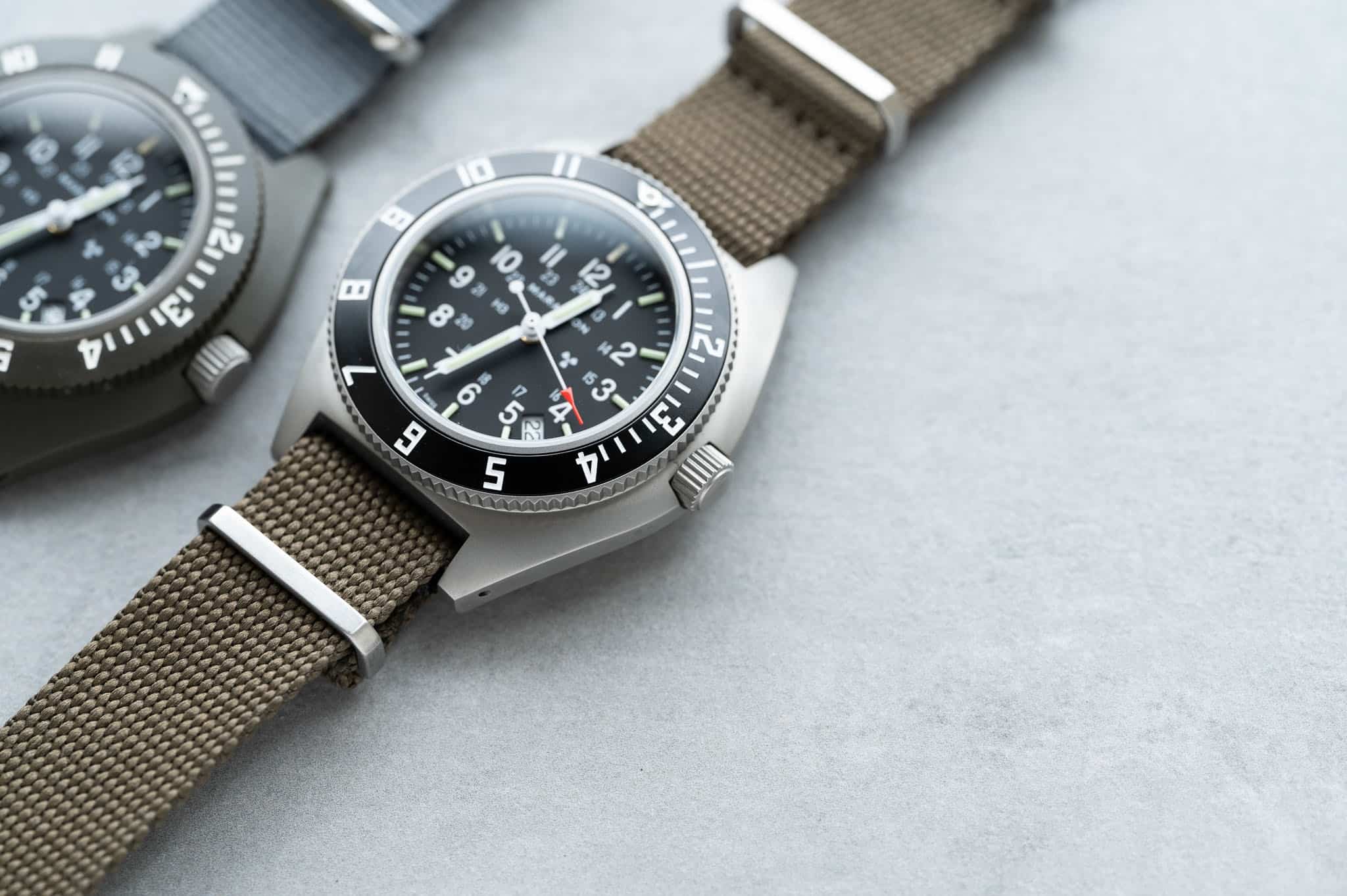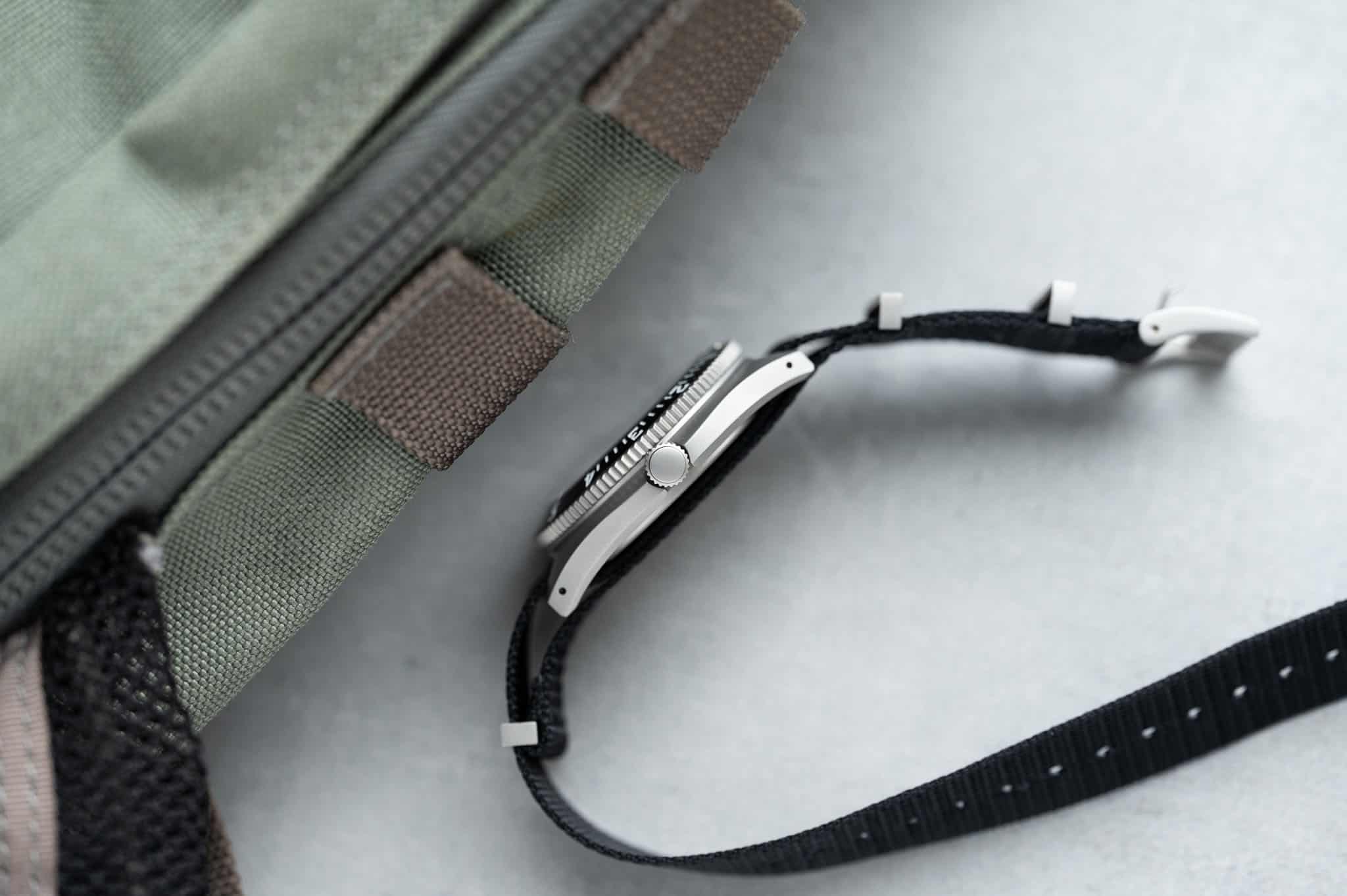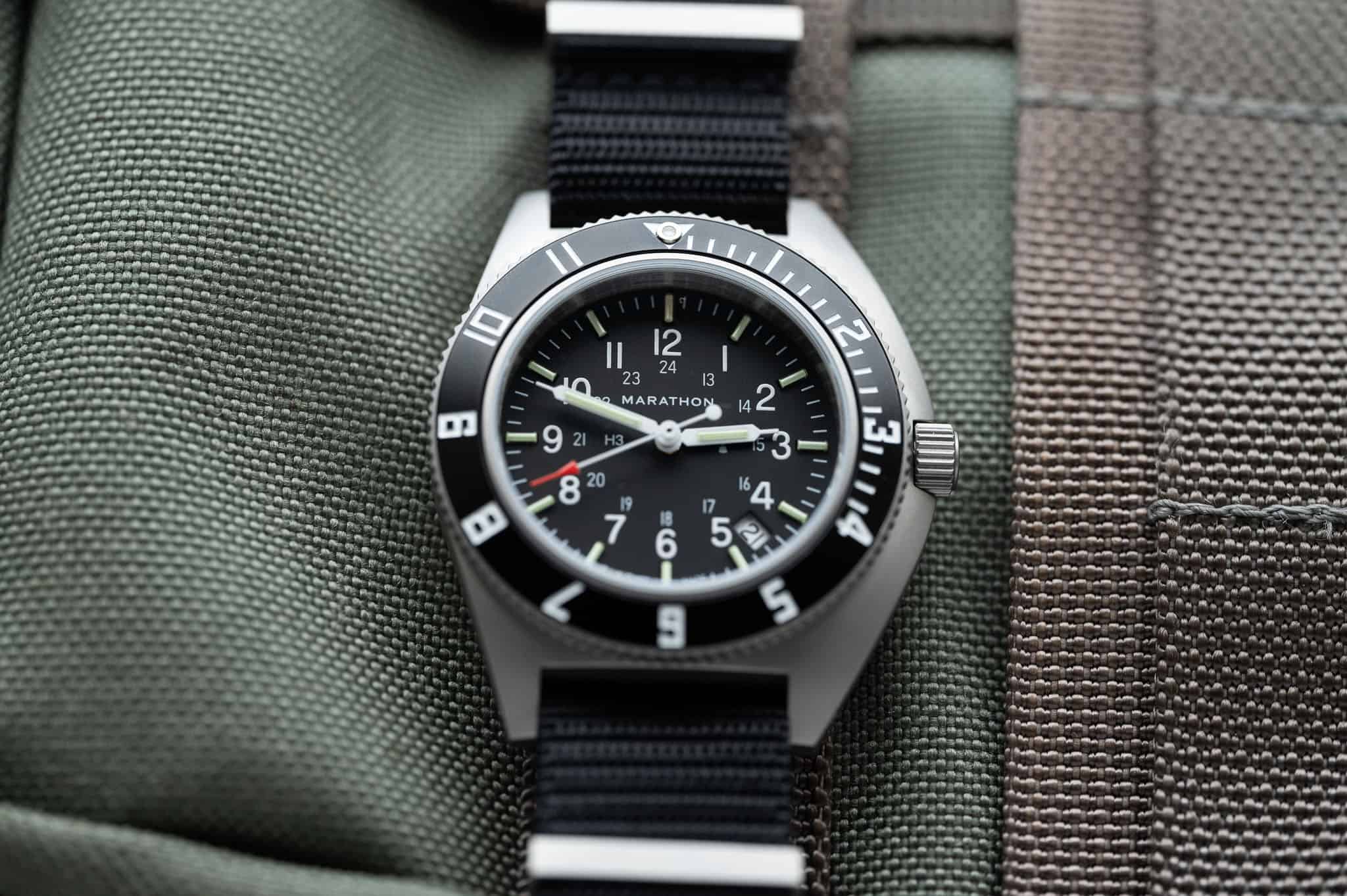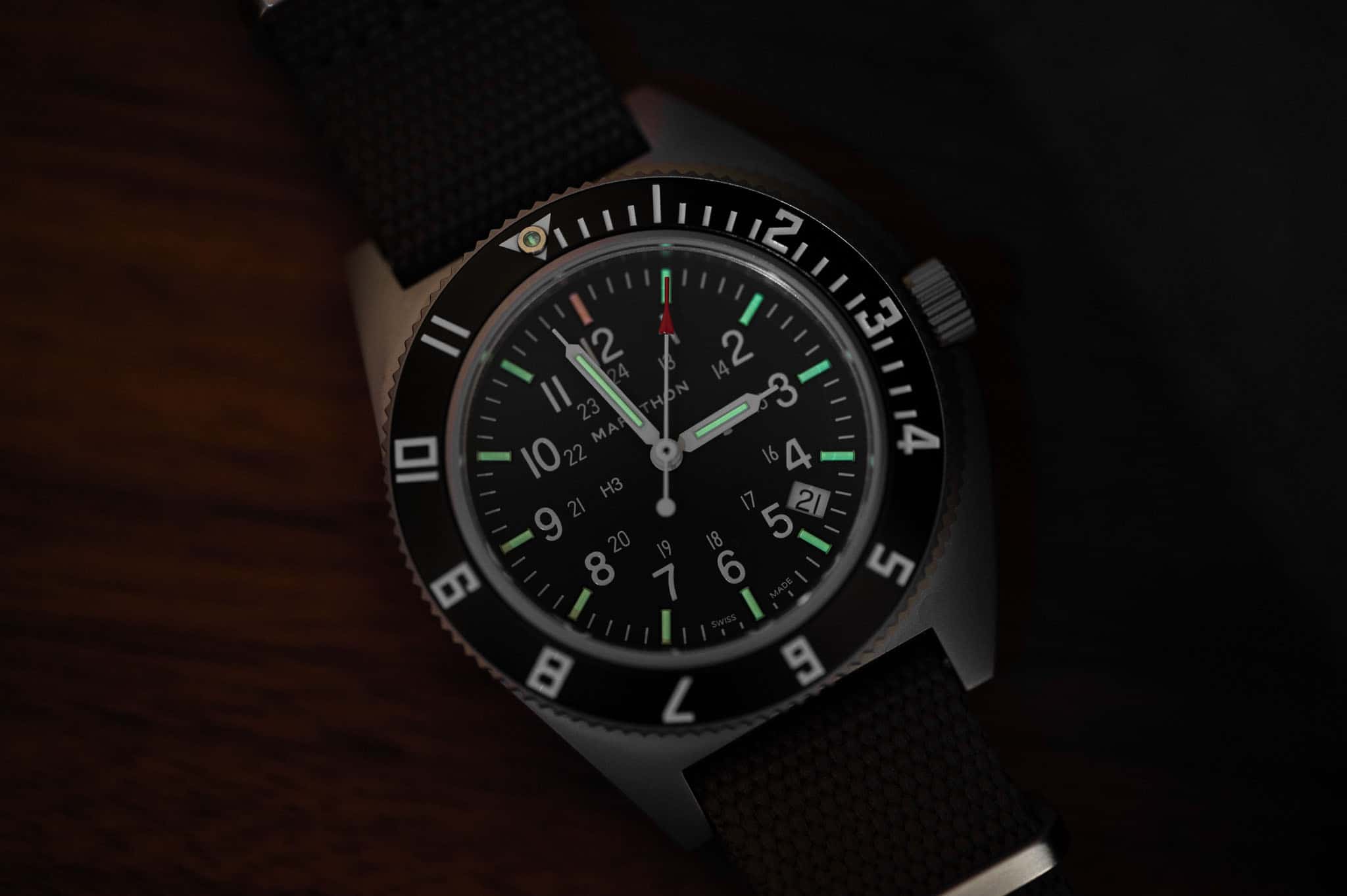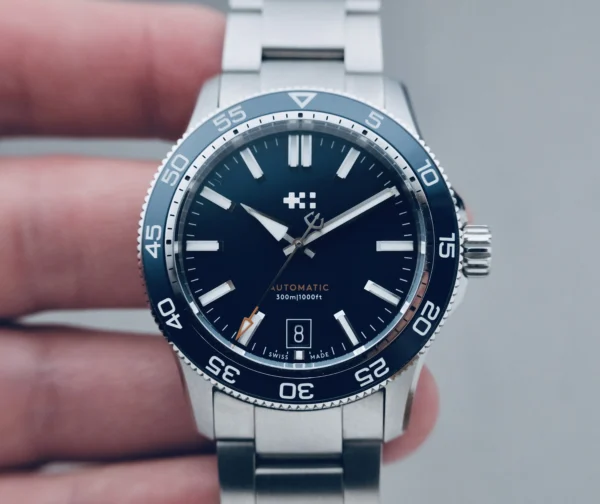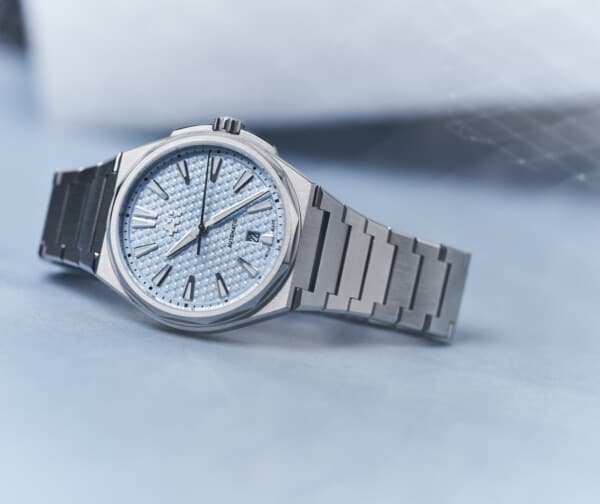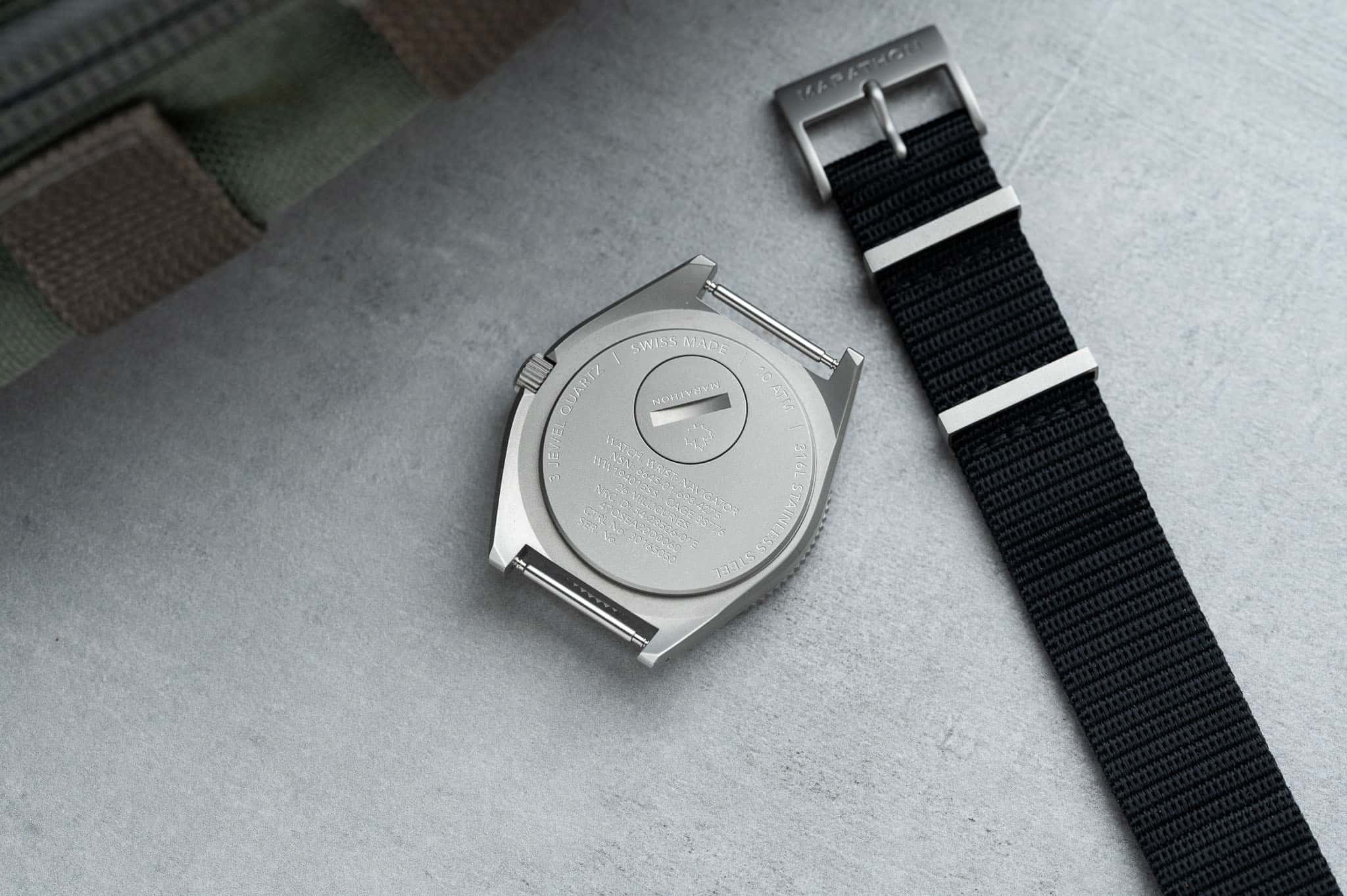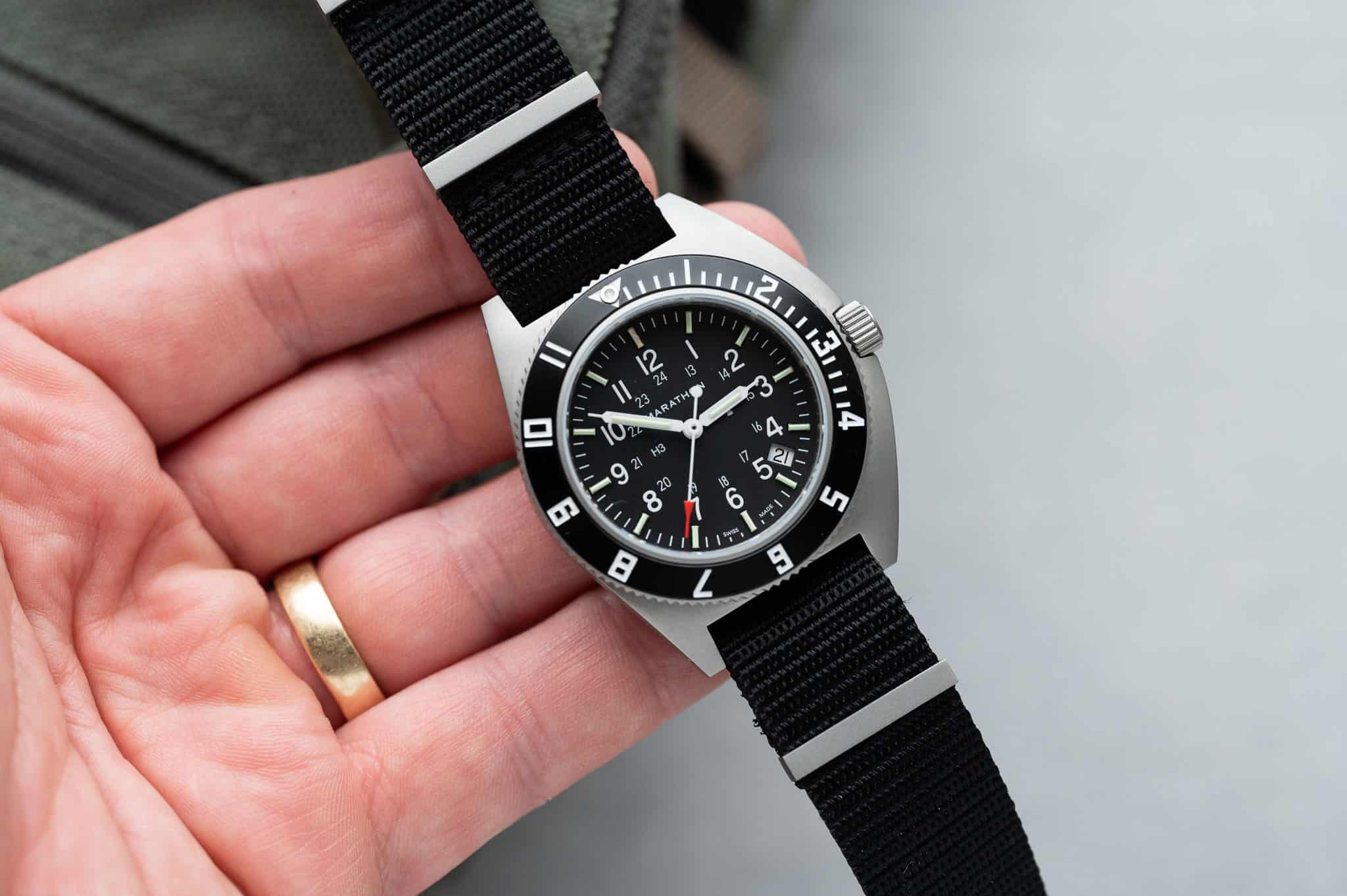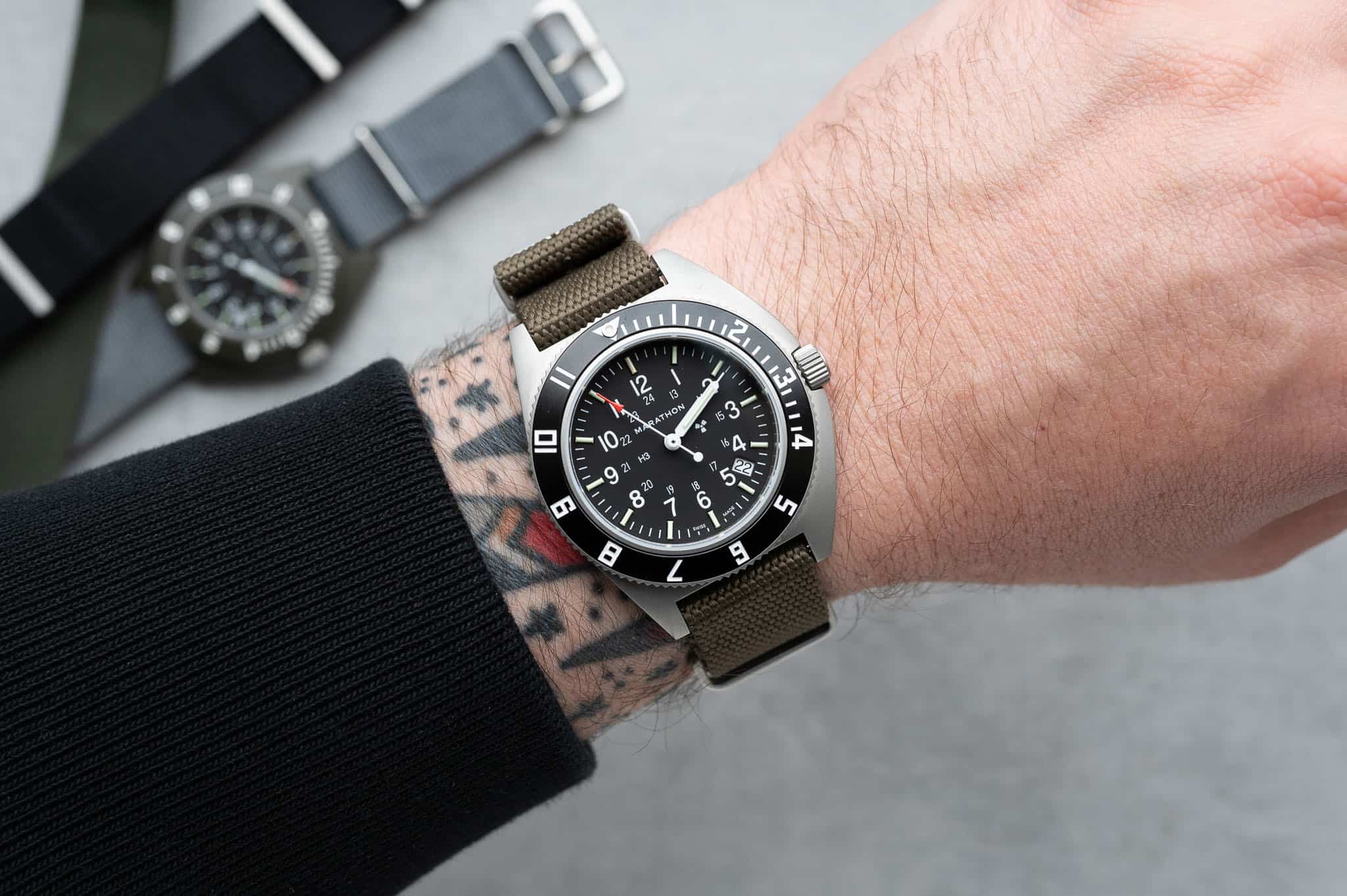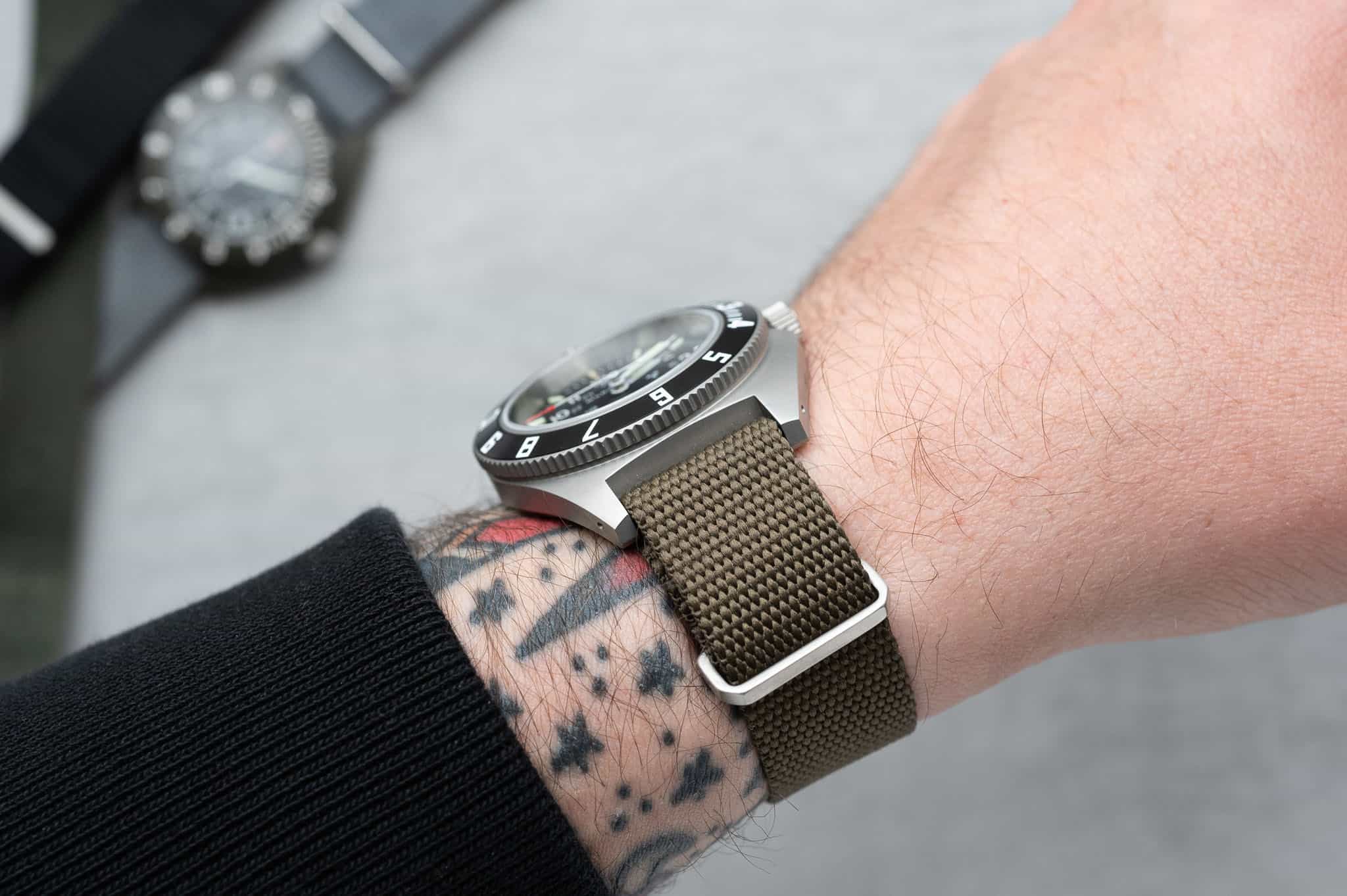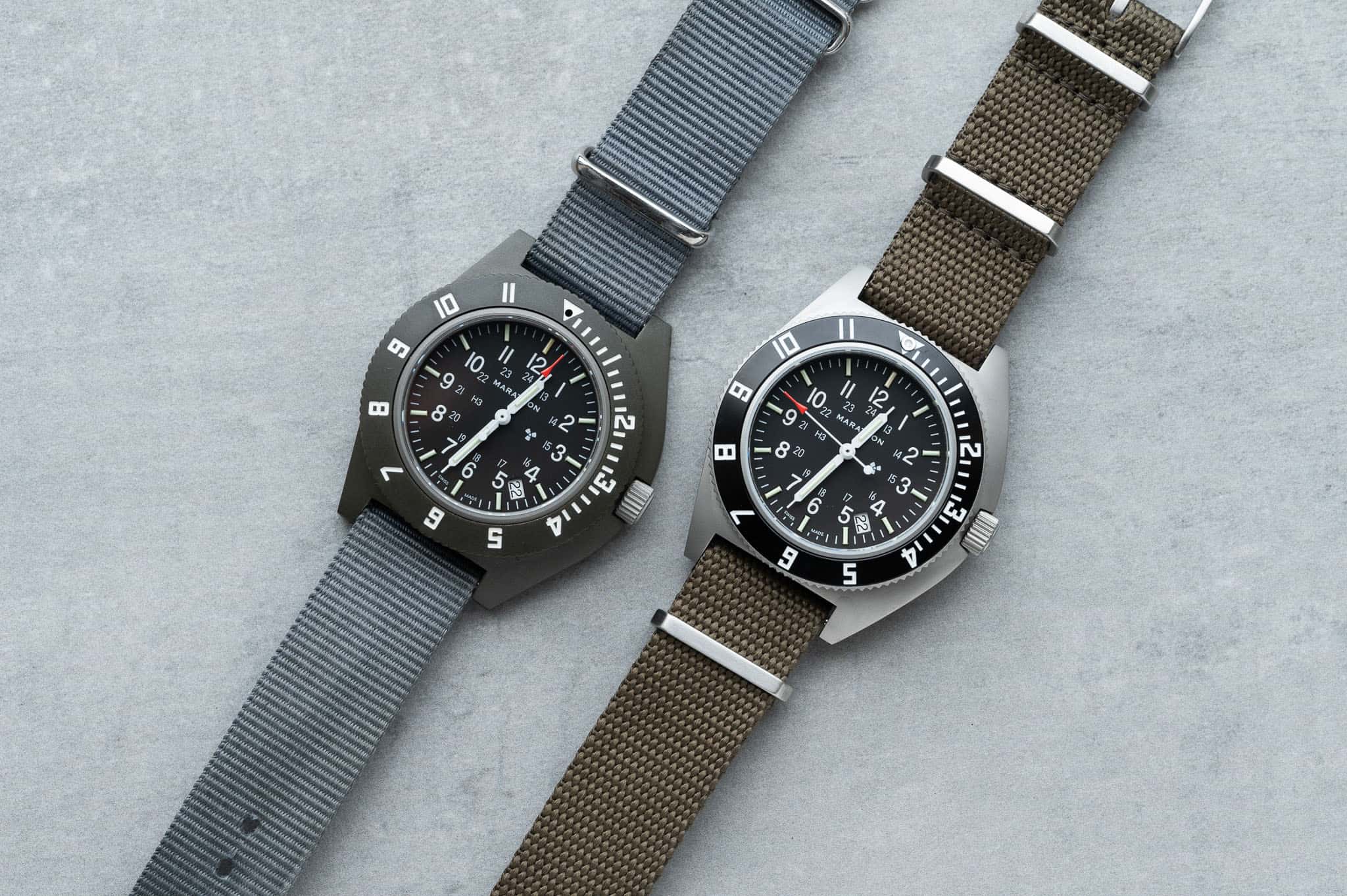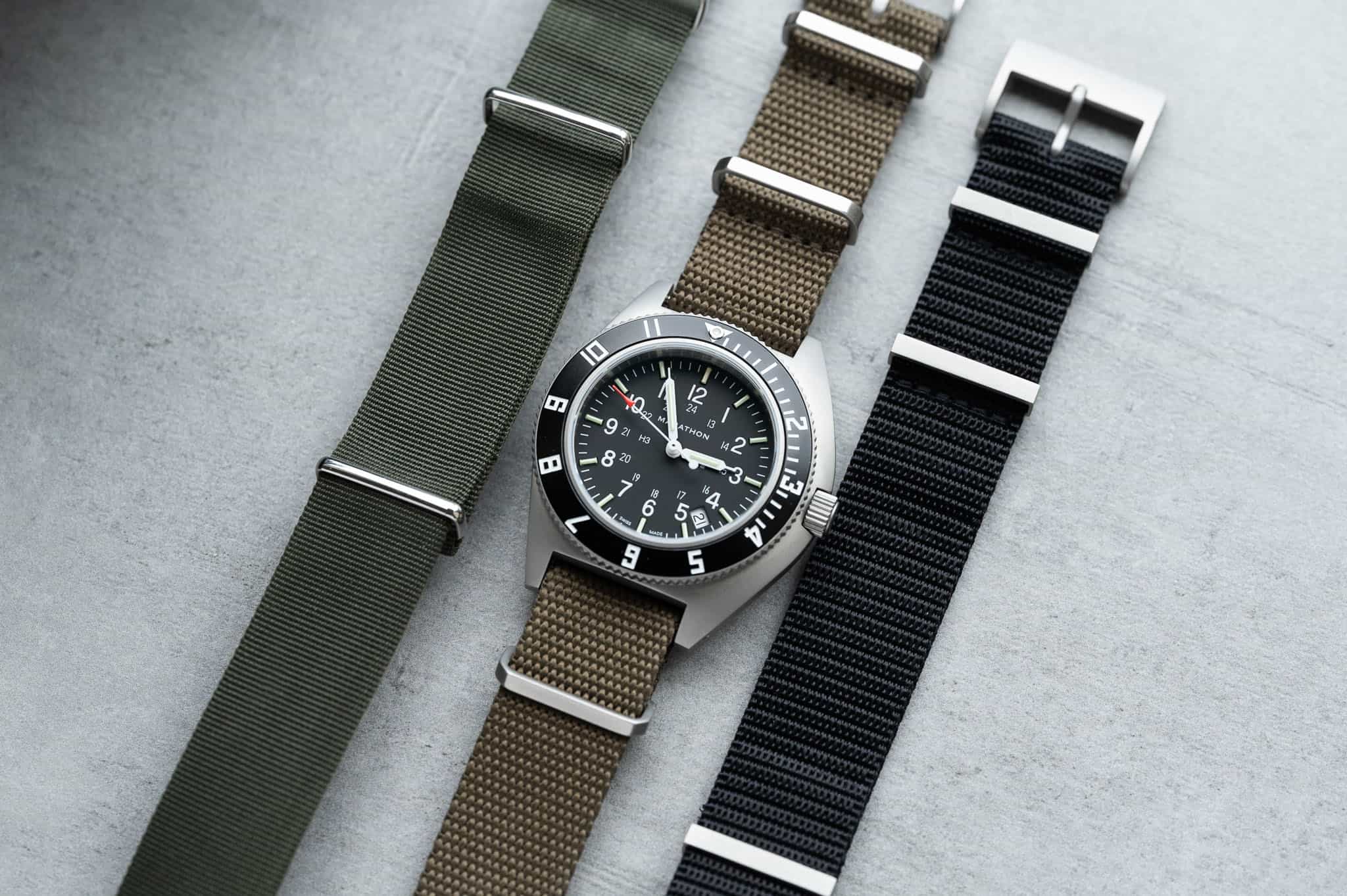I have a soft spot for asymmetrical cases. Whether it’s my trusty Speedmaster or my own personal resin-cased Marathon Navigator, something about the offset case shape just hits different. Today, I’m excited to take a look at one of Marathon’s newest offerings — the Navigator in stainless steel. Upon trying it on for the first time, it just immediately clicked. This watch feels like it was made to be rendered in the matte stainless steel. This Canadian-designed and Swiss-manufactured watch is part of a solid lineup of MIL SPEC watches that are built to withstand the toughest conditions. Originally designed for paratroopers, pilots, and law enforcement, the Navigator is a no-frills watch that’s built like a tank. One of the best parts about it is how it wears, it wears deceptively small for its measured size due to the handsome asymmetrical case. Let’s take a closer look at this tough offering from Marathon that I believe makes an excellent everyday watch. We’ll also be making some comparisons between the stainless steel version and the original resin case.
But first, let’s get a brief history lesson on this MIL SPEC watch and how it came to be. The military specification “MIL-W-46374” is used by the US military to address their specific needs for wrist watches. Originally developed in 1964 during the Vietnam War, this spec has undergone several different revisions, currently sitting at Rev. G, which it’s remained at since 1999. The original spec lacked the rotating bezel, which was added into the spec in 1991. If you look up the code, you’ll be taken to the actual spec sheet that calls out the features of the watch, which currently lives on the US Nuclear Regulatory Committee’s website. This style of case and dial may look familiar, since typically military jobs go out to the lowest bidder. Other makers like Benrus, Hamilton, and even Timex have made military spec watches. Marathon has been in the business for over 80 years, with military watch experience dating back to the start of World War II. MIL SPEC design has a heavy focus on durability and reliability, making the ideal candidates for us civilians as well.









 Featured Videos
Featured Videos




